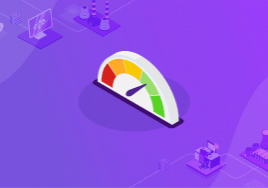Complying with the GHG Protocol can bring lots of benefits like the ability to better manage risk, the ability to participate in mandatory reporting programs, or access to GHG markets. There are many tools out there that claim to help with GHG Protocol compliance, but it can be hard to know where to start. An EMOS is a great example of a digital solution that can help with compliance. It also has many other functionalities that go beyond GHG compliance. In this article, we will explore what the GHG Protocol entails and how the use of an Energy Management and Optimization System (EMOS) can support a company when complying with the GHG Protocol.
GHG protocol: an international voluntary standard

A global effort to standardize the accounting and reporting of GHG emissions
The GHG Protocol Initiative is a collaborative effort from businesses, non-governmental organizations (NGOs), governments, and other stakeholders. Their goal is to help organizations assess and report progress towards their GHG emission reduction targets in a relevant, consistent, comprehensive, and transparent manner.
The partnership was initiated in 1998 by the World Resources Institute (WRI), a US-based environmental NGO, and the World Business Council for Sustainable Development (WBCSD).
How companies can benefit from a universal GHG Protocol
The protocol was first published in September 2001 and was widely accepted by companies, NGOs, and governments alike.
Companies especially welcomed aspects of the protocol that could help them with their GHG inventory needs, and this resulted in the development of the Corporate Accounting and Reporting Standard. This standardized reporting method allows companies to accurately present their real emissions while also simplifying and reducing the cost of establishing their GHG inventory. This information can in turn be used to build a more global strategy to manage and reduce GHG emissions altogether. Participation in GHG programs (voluntary and or mandatory) depends on the ability to establish and report an accurate GHG inventory.
The universal use of the GHG Protocol’s Corporate Accounting and Reporting Standard also guarantees consistency and transparency in reporting practices across companies and GHG programs.
What is the link between the GHG protocol and ISO standards?
The GHG Protocol's corporate accounting and reporting standards are guidelines that standardize accounting and reporting practices without requiring companies to obtain certification (as is the case with ISO standards).
The calculation tools and detailed examples in the GHG Protocol may in turn be used to demonstrate a company’s ability to meet prescribed emissions criteria contained in ISO standards such as ISO 14064.
GHG Protocol compliance: the benefits of an EMOS platform
Creating an inventory of GHG emissions according to the reporting and accounting practices contained in the GHG Protocol can be greatly facilitated by the use of a digital Energy Management and Optimization System (EMOS). This kind of solution helps companies track the various sources of GHG emissions much more easily than traditional methods and gives a clear and reliable overview and breakdown of a company’s total GHG emissions.
Centralization of GHG emissions data
Gathering the right data about various types of emissions produced by a company’s activities is essential when it comes to providing reliable analyses. An EMOS platform serves to centralize the data gathered by networked measuring devices or sensors, providing real-time and aggregated data on various variables and parameters associated with operational activities. If real-time data gathering is insufficient or absent, data can be fed into the EMOS platform manually or imported from CSV files.
The data centralization provided by an EMOS platform allows for a real-time overview of all GHG emissions produced by a company’s activities for different time intervals. In addition, it has several widgets and dashboards that allow you to view both aggregate meters or individual readings.
In other terms, moving away from manual data gathering efforts to rely solely on automated measuring devices, allows for further cost reductions.
Digitization reduces the risk of getting insufficient data
Want to learn more about the role of digitalization in industry? See our interview with Matthieu Vivier, Industrial digitalization manager at METRON.
Benchmarking of GHG emissions
A GHG inventory provides an overview of GHG emission sources as well as the emissions for each source over time. The development of this company-wide tool is a crucial first step in setting a GHG emissions reduction target and forms the basis for tracking progress against targets.
An EMOS platform provides users with a precise tool to analyze GHG inventory data from different perspectives through the ability to select emission factors, time intervals, and operational units.
The system enables the creation of benchmarks and key performance indicators (KPIs), produces reports and easy-to-read dashboards to track performance and progress. In addition, METRON’s EMOS platform allows users to distinguish between direct and indirect GHG emissions and to classify them according to the 3 scopes of carbon emissions.
Access to up-to-date emission factors
An emission factor is a representative value that gives an indication of the quantity of a GHG emission released into the atmosphere in relation to an activity that is likely to generate GHG emissions.
These factors are compiled and updated by different organizations, such as the IPCC (Intergovernmental Panel on Climate Change). They are used for various activities and can be used if a direct measurement is impractical or too expensive. Even though emission factors that are based on direct measuring are more accurate, emission factors provided by regulating bodies offer a reliable estimate of GHG emissions and can be used until the source – or facility – specific emission factors become a viable option.
An EMOS platform includes a large database of emission factors and allows users to add to this database. The emission factors are listed in the platform’s library and are sourced from relevant and up-to-date resources. Users are able to tweak emission factors in order to construct a variety of GHG emission reduction scenarios. The emission factors are applied within similar activities taking place in different subunits for consistent outcomes.
Baseline scenario building and progress tracking
GHG emissions reduction target setting and mitigation strategies have become a priority across company supply chains and it is also one of the subjects covered by the GHG Protocol. For companies with GHG reduction targets relative to a historical base year, the platform can help track the performance over time using a particular reference year of baseline.
In the case of a GHG project (a specific activity intended to reduce GHG emissions, increase carbon storage or enhance carbon removal from the atmosphere), an EMOS platform can also be used to build a baseline scenario. A baseline scenario is a hypothetical reference case that best represents the actions and conditions most likely to occur in the absence of one or more policy interventions.
Being able to accurately report GHG emissions within the GHG Protocol’s accounting and reporting framework will likely prove to be an asset for your company. An EMOS platform like METRON’s can help you manage your GHG emissions and be compliant with the GHG Protocol. In addition, METRON’s EMOS platform allows users to build baseline scenarios and track the progress of GHG emission reduction efforts, to access a library of up-to-date emission factors when company-specific emission factors are still being developed.
Would you like to talk to one of our experts about your organization’s GHG emissions?










